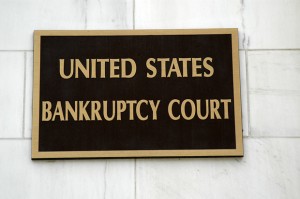 Fraudulent transfer refers to a transfer of property made by a debtor in order to defraud creditors. For example, selling, or giving away a house to some other person in order to keep the property out of the hands of the creditors. Courts use the Badges of Fraud, a set of convincing factors, to determine whether or not a transfer of property was in fact a fraudulent transfer. The courts have a strong policy against allowing debtors to harm creditors by intentionally dissipating their assets. Bankruptcy trustees can avoid these types of transfers so that the property can be seized for the benefit of the creditors. The trustee may also ask that the bankruptcy court withhold a discharge from the debtor. In general, trustees will scrutinize transfers that occurred within two years to determine whether or not fraud occurred.
Fraudulent transfer refers to a transfer of property made by a debtor in order to defraud creditors. For example, selling, or giving away a house to some other person in order to keep the property out of the hands of the creditors. Courts use the Badges of Fraud, a set of convincing factors, to determine whether or not a transfer of property was in fact a fraudulent transfer. The courts have a strong policy against allowing debtors to harm creditors by intentionally dissipating their assets. Bankruptcy trustees can avoid these types of transfers so that the property can be seized for the benefit of the creditors. The trustee may also ask that the bankruptcy court withhold a discharge from the debtor. In general, trustees will scrutinize transfers that occurred within two years to determine whether or not fraud occurred.
Preferences are payments made on legitimate claims in the months before filing bankruptcy. Preferences occur when the debtor transfers property to or for the benefit of a creditor on account of a debt while the debtor is insolvent and the transfer is made during the preference period. The preference period is 90 days before the bankruptcy case is filed or 1 year before the bankruptcy case if the payment was made to an insider like a family member or business partner. Not all preferences are avoided by the trustee. Sometimes the amounts are too small to warrant the costs associated with recovery of the money or property. Small preferences, which total less than $600 during the preference period, are not avoidable on consumer debts. Similarly, preferences that occurred in the ordinary course of business are not usually avoidable, assuming the transfer was made according to ordinary business terms. Payments on secured claims are usually protected from preference avoidance, because of the betterment in position rule. This rule states that payments to secured creditors are protected from avoidance because the payment does not improve the creditor’s position and are not technically a preference.